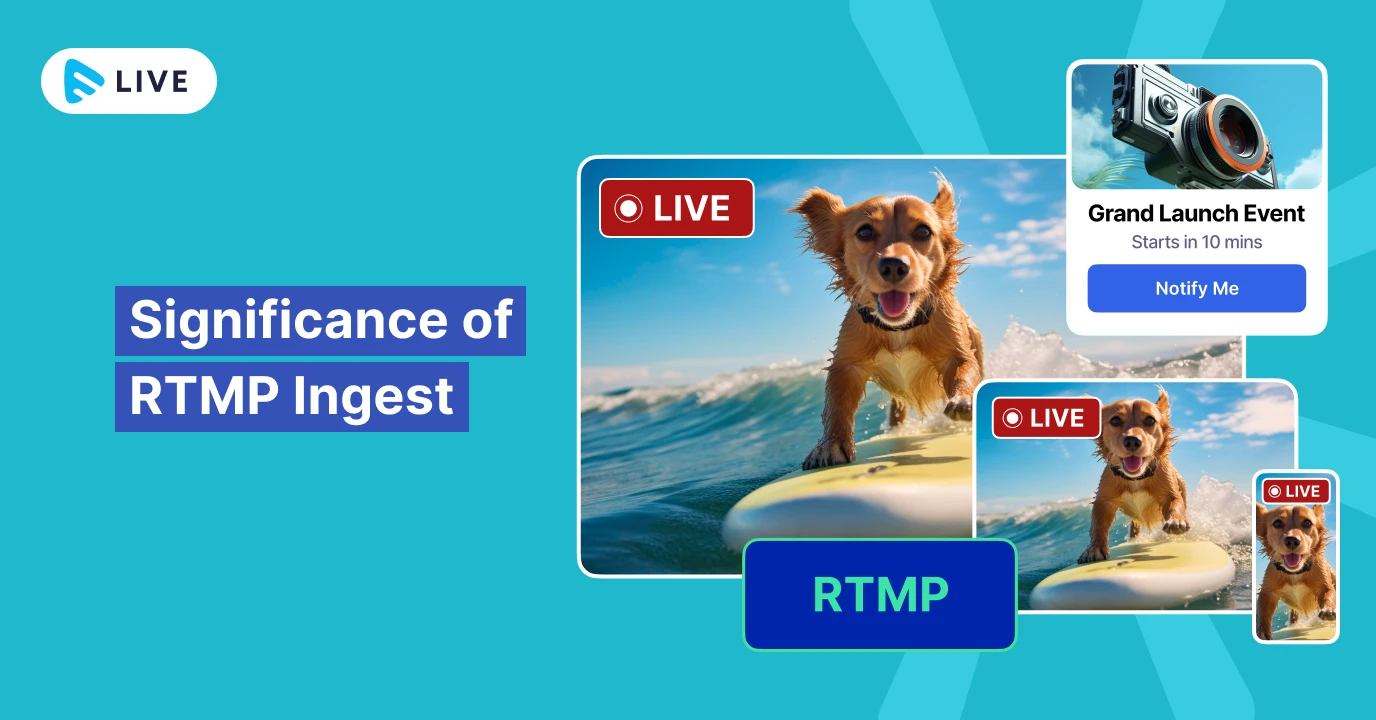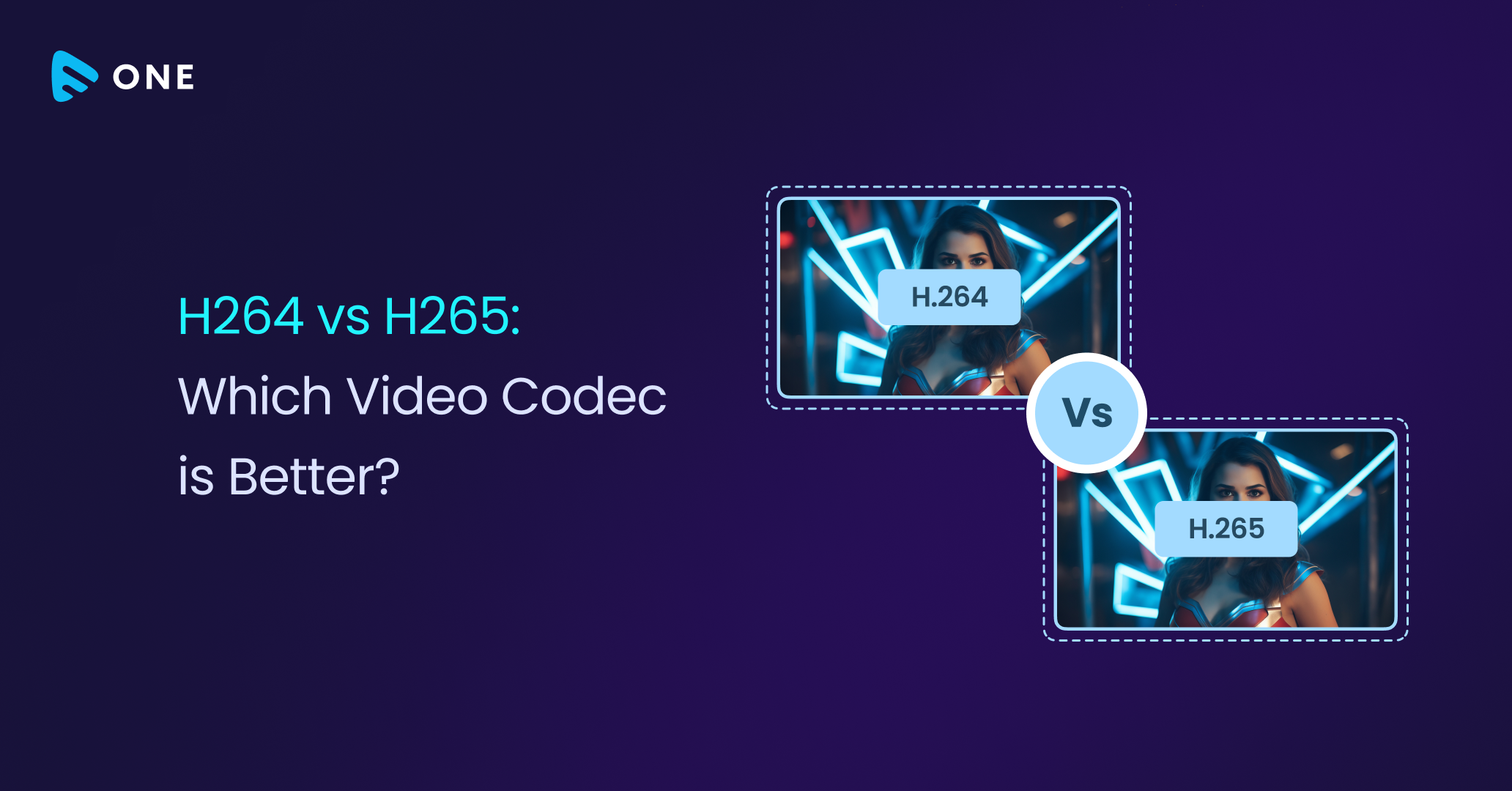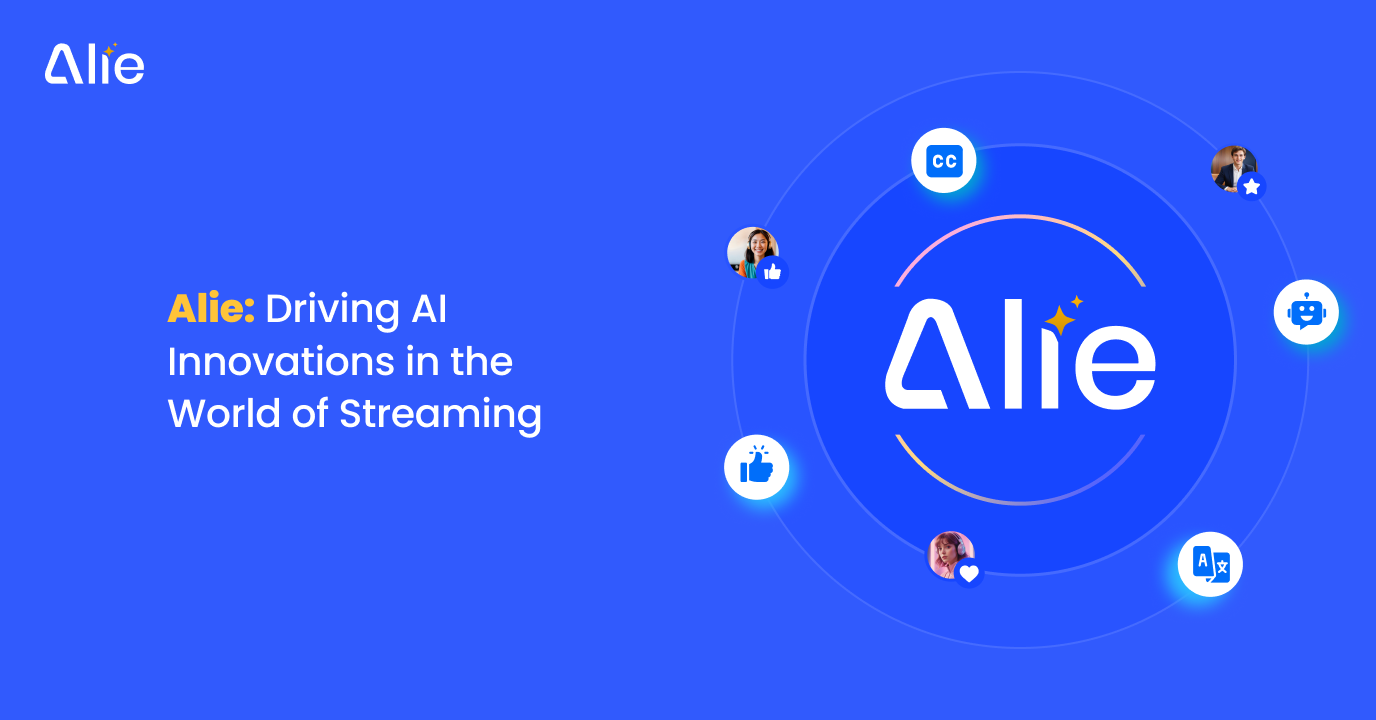Live streaming today is a major component of any business and is not just restricted to the entertainment sector. Today, businesses worldwide use the power of live streaming to sell their products and services globally, and live streaming acts as a major tool for effective communication. Professional live streaming tools not only allow anyone to start professional live streaming instantly but also offer all major live streaming protocols, which we will talk about in this blog.
Live streaming protocols are rules and logic that manage live streaming by defining how audio and video data is transmitted over the internet in real-time from the source to its multiple destinations allowing viewers to access content live. Naturally, there is more than one live stream and it depends on a lot of factors, on which protocol should be chosen. Read our blog on the best live streaming protocols for professional streamers to learn more. In this blog, we are going to learn about real-time messaging protocol (RTMP), its significance to the live streaming community in the form of ingest streaming, and how it makes affordable live streaming possible for the masses using very few resources.
What is RTMP Ingest?
Before we understand RTMP Ingest, it is important to know about RTMP, a live streaming protocol created by Macromedia and then acquired by Adobe and deployed for live streaming media over the internet using its Adobe Flash Player. RTMP was a flash-based media streaming protocol that offered low latency live streaming using its flash functionalities. With time, most web browsers globally stopped supporting Flash on its browsers, and slowly the technology became obsolete and is now rarely used.
Multiple forms of RTMP exist such as RTMP Secure, RTMP Encrypted, RTMP Tunneling, and RTMFP.
RTMP ingest is a common use of the protocol and handles communication between encoders and online video players. We know that most browsers do not support flash-based streaming protocols. However, owing to RTMP’s low latency and cost-effective streaming methods are utilized in RTMP ingest to transfer media streams from the encoder to the online video platform’s server. From there the platform can choose to stream it using more popular methods of streaming such as HLS.
If we look into the basic structure of live streaming, it starts with the recording of content from the camera which then goes into the RTMP encoder that then transfers it to the OVP which further uses multiple CDNs to reach out to a global audience. So basically we use the RTMP protocol to ingest a live stream to the online video platform and hence it is called RTMP ingest.

How RTMP Ingest Works In Live Streaming?
As discussed above, RTMP Ingest has a major task at hand and that is to transmit media streams of data to the online video platform or wherever the client wants the data to go. There are 3 major components of an RTMP Ingest live stream that are involved in the transmission of live encoded video to the live streaming platform.
Handshake
This is step 1 of RTMP Ingest streaming where the client or the streaming software sends three data points. The first data point is to inform the server of the type of protocol for encoding and decoding of stream, the second one gives information about the timestamp and once both are received, the third data point establishes a connection.
Connect
Once the handshake is established, communication is made between client and server in action message format (AMF) language and the start of streaming is initiated.
Stream
As soon as the handshake is complete and the client and servers are communicating, streaming can start as soon as you give a command. The streams then reach the online video hosting platform and from there, it is directed to the desired users via MPEG-DASH, HLS or any other protocol as decided by the user.
This is how RTMP Ingest streaming works and plays a major role in offering low-latency streaming to users.
RTMP Vs RTMP Ingest
RTMP and RTMP Ingest use the same protocol but are different aspects of the live-streaming process. RTMP was designed to be used with Adobe Flash Player applications. Over time, Flash has lost its popularity and significance in the industry and is replaced by newer technologies such as HTML5.
RTMP Ingest on the other hand uses the RTMP protocols to establish communication between an encoder to the online video platform that is used for live streaming to the browsers. It is a practical implementation of the RTMP protocol and has become an essential part of the live streaming workflow and facilitates the transmission of live feeds.
Benefits of RTMP Ingest During Live Streaming
Widespread Support
RTMP has historically enjoyed widespread support in various software encoders, live-streaming platforms, and media servers. This broad support makes it accessible and compatible with a wide range of devices and applications in its ingest form of streaming as a utility tool to transmit data and establish communication between the encoder and video platform.
Low Latency
RTMP ingest has a relatively lower latency rate when compared to other protocols. This gives it a preferential option to stream content that requires more real-time streaming needs such as live sports streaming and live broadcasts. This low latency also helps establish communication with the viewers in the form of live chat.
Cost Effective
RTMP reduces the need for additional infrastructure and works with almost all types of free encoders available in the market. It uses the available network resources very effectively without compromising the quality of streams.
Adaptive Bitrate Streaming
RTMP Ingest supports adaptive bitrate streaming making it an ideal choice to stream content over a wide range of devices with different network speeds.
Easy Integration
RTMP is relatively easy to implement and integrate into live streaming workflows. Many encoding software and media servers have built-in support for RTMP, simplifying the setup process for content creators.
HLS Vs RTMP: Which Output Should You Choose for Live Streaming?
HLS or HTTP live streaming is the most widely used live streaming protocol developed by Apple Computers and since Flash became obsolete, HLS is one of the major live streaming protocols used owing to its adaptability for almost all types of web applications and browsers. It is used to transfer live streams from CDNs to online video players on web browsers and other applications.
Its list of advantages includes support for multi-bitrate streaming or adaptive bitrate streaming, is secure and can easily be combined with security protocols, prevents buffering, and is easily one of the most popular live streaming protocols available in the market. RTMP Ingest cannot be used for live streaming of the content as no browsers support Flash-based streaming now.
However, RTMP Ingest is still a reliable encoding technology that adapts a wide range of encoders. Hence RTMP Ingest can be used to transmit data from the encoders to the online video platform and from there, it can be transmitted to browsers using HLS. Hence a combination of the two good technologies can offer you a great streaming experience for the users.
Muvi Live: Best Live Streaming Solution
Live streaming today as we said before is an essential part of any business. Organizations globally use live streaming for education, training, marketing, entertainment services, and much more. Live streaming has become an important aspect of internet consumption and has found its way to establish itself as a major source of revenue for various content creators and distributors.
Muvi Live is an out-of-the-box live-streaming software solution that lets professional live streamers start live streaming instantly and right from their mobile phones. With ultra-fast CDNs and secure live streaming capabilities, Muvi Live lets you create and manage live multiple live streams all from a single CMS and reach out to a global audience thanks to its universally compatible HTML5-based video player.
Bonus Tip: Muvi Live lets you choose the streaming protocol of your choice and our excellent team of engineers are available 24/7 to configure your live streams as per your preference.
Must Know Features of Muvi Live
Pay-As-You-Go Pricing
Gone are the days when streamers paid monthly fees to use the software. Muvi Live is a fully pay-as-you-go streaming software solution that bills you only on the basis of what you consume in terms of bandwidth and streaming minutes. No recurring charger ever!
Meetings
Host meetings with up to 600 participants on Muvi Live itself and broadcast it all over the globe instantly. No more need to buy individual video conferencing tools to communicate.
Muvi Live App
Start live streaming instantly using the Muvi Live application for Android and iOS and turn your phone into a professional camera and mobile streaming platform.
Muvi Live SDK
Build interactive live streaming applications from the ground up using a suite of live SDKs and APIs for any platform of your choice and reach a wide range of devices for your business.
On The Go Analytics
Muvi Live’s analytics and reports enable content creators to identify and track streaming performance based on different metrics. You can capture all audience actions and interactions, including your content performance, which in turn, helps you optimize the quality of your future live streams
The list of features is endless. Most importantly, Muvi Live is a PAYG software solution which means you do not need to set up any payment information initially and you can start streaming instantly. Try Muvi Live today to know the difference.
RTMP may be an old technology but RTMP Ingest plays a crucial role in the live-streaming landscape. A combination of RTMP ingest with other protocols can ensure a smooth and secure live streaming experience and software platforms like Muvi Live can help you deliver the best live streaming experience by utilizing the best technologies available in the market. Start today!
















Add your comment